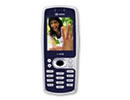'ZDNET Recommends': What exactly does it mean?
ZDNET's recommendations are based on many hours of testing, research, and comparison shopping. We gather data from the best available sources, including vendor and retailer listings as well as other relevant and independent reviews sites. And we pore over customer reviews to find out what matters to real people who already own and use the products and services we’re assessing.
When you click through from our site to a retailer and buy a product or service, we may earn affiliate commissions. This helps support our work, but does not affect what we cover or how, and it does not affect the price you pay. Neither ZDNET nor the author are compensated for these independent reviews. Indeed, we follow strict guidelines that ensure our editorial content is never influenced by advertisers.
ZDNET's editorial team writes on behalf of you, our reader. Our goal is to deliver the most accurate information and the most knowledgeable advice possible in order to help you make smarter buying decisions on tech gear and a wide array of products and services. Our editors thoroughly review and fact-check every article to ensure that our content meets the highest standards. If we have made an error or published misleading information, we will correct or clarify the article. If you see inaccuracies in our content, please report the mistake via this form.
Sagem myX-6


Sagem myX-6
pros and cons
- Feature-packed, including built-in VGA-resolution CCD camera good quality 16-bit display.
- Lightweight construction awkward buttons no Java or Bluetooth.
The story may be different in the country Sagem hails from, France, but on this side of the Channel, the Gallic company has for some time been regarded as the Skoda of mobile phones. It made cheap and cheerful entry-level handsets, which were not widely available in the UK. That analogy is apt, for, like the Czech car maker, Sagem’s stock is also set to rise with the launch of its latest phone, the myX-6 -- its first serious assault on the UK phone market.
Sagem has clearly tried hard with the myX-6, and has managed to squeeze many cool features in to a small form factor. It includes a large 128 by 160 pixel, 16-bit colour TFT screen, (quite possibly the best yet on a mobile phone), polyphonic ringtones and support for the In-Fusio ExEn game system. More importantly, it has an integrated CCD-based 640 by 480 resolution camera, making it more sensitive than most other phone cameras, which use CMOS sensors. And if it’s customisation you want, well there isn’t much on the myX-6 that can’t be changed: it has clip-on covers, wallpaper, polyphonic ringtones and skins, with more ear- and eye-candy available for download at the PlanetSagem web site. All this can be stored in its 2.3MB of memory, which is shared between all its applications -- pictures, voice messages and address book.
The phone is GPRS (4+1 and 3+2) and WAP-enabled, but there’s no Web browser or email client built-in. Bluetooth is also conspicuous by its absence, but the side-mounted IrDA port is some compensation. The myX-6 comes with Wellphone comms software, which lets a PC use the myX-6 as a GPRS modem. There is a SIM contact manager, but synchronisation with Outlook/Outlook Express is rudimentary to say the least.
The myX-6’s closest rival is undoubtedly Sony Ericsson’s new T610 -- the myX-6 is a few millimetres bigger in all directions and 11g heavier. It also closely resembles the T610 in appearance, sharing several styling cues such as a rectangular case and tiny lozenge-shaped buttons. But the similarities are only skin-deep. For one thing, the myX-6 has a better camera -- a 300Kpixel CCD unit versus the T610’s modest 110Kpixel CMOS camera. The camera offers a three-stage zoom plus a modicum of exposure settings. You can also edit and process the pictures afterwards, to the extent of even being able to annotate them. Photoshop it isn’t, but it’s impressive to see such features on a phone.
Like Nokia’s 7250 and SE T610, the myX-6’s camera is located at the rear of the handset, hidden behind a small sliding cover. The myX-6 lets you choose the image resolution after you take a snap -- you can choose between 480 by 640, and 120 by 160. It takes around 8 - 10 seconds to save a photo, a little bit slower than the aforementioned Nokia products.
The myX-6 has a slightly flimsy feel to it. The build quality is somewhat plasticky and the phone lacks the heft and solidity found in most Nokias, for example. The keypad also makes it slightly awkward to use. The joypad action is a little stiff and requires some pressure to ‘click’, while the number keys could have been made a little larger -- although their ‘click’ action is reasonable enough. Talk time is generous, and you can get over four hours’ continuous use from it, thanks to its 1,050mAh Li-on battery. Power management is quite aggressive, so the TFT back light doesn’t remain on for long. Eventually the main screen is replaced by a screensaver, but the lack of light and tiny text make that very hard to read.